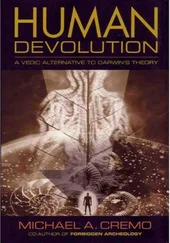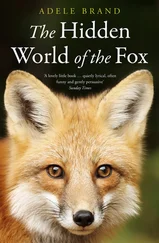Michael Cremo - Forbidden Archeology - The Hidden History of the Human Race
Здесь есть возможность читать онлайн «Michael Cremo - Forbidden Archeology - The Hidden History of the Human Race» весь текст электронной книги совершенно бесплатно (целиком полную версию без сокращений). В некоторых случаях можно слушать аудио, скачать через торрент в формате fb2 и присутствует краткое содержание. Год выпуска: 1992, ISBN: 1992, Издательство: Torchlight Publishing, Жанр: Старинная литература, на английском языке. Описание произведения, (предисловие) а так же отзывы посетителей доступны на портале библиотеки ЛибКат.
- Название:Forbidden Archeology: The Hidden History of the Human Race
- Автор:
- Издательство:Torchlight Publishing
- Жанр:
- Год:1992
- ISBN:9780892132942
- Рейтинг книги:4 / 5. Голосов: 1
-
Избранное:Добавить в избранное
- Отзывы:
-
Ваша оценка:
- 80
- 1
- 2
- 3
- 4
- 5
Forbidden Archeology: The Hidden History of the Human Race: краткое содержание, описание и аннотация
Предлагаем к чтению аннотацию, описание, краткое содержание или предисловие (зависит от того, что написал сам автор книги «Forbidden Archeology: The Hidden History of the Human Race»). Если вы не нашли необходимую информацию о книге — напишите в комментариях, мы постараемся отыскать её.
Forbidden Archeology: The Hidden History of the Human Race — читать онлайн бесплатно полную книгу (весь текст) целиком
Ниже представлен текст книги, разбитый по страницам. Система сохранения места последней прочитанной страницы, позволяет с удобством читать онлайн бесплатно книгу «Forbidden Archeology: The Hidden History of the Human Race», без необходимости каждый раз заново искать на чём Вы остановились. Поставьте закладку, и сможете в любой момент перейти на страницу, на которой закончили чтение.
Интервал:
Закладка:
Lyell (1863, p. 146) had argued that it was not “part of the plan of nature to store up enduring records of a large number of individual plants and animals which have lived.” Rather nature tends to regularly clear her files, employing “the heat and moisture of the sun and atmosphere, the dissolving power of carbonic and other acids, the grinding teeth and gastric juices of quadrupeds, birds, reptiles, and fish, and the agency of many other invertebrata” (Lyell 1863, p. 146). Lyell also pointed out that researchers who had attempted to dredge human fossils from the sediments on the sea bottom had also been unsuccessful. He cited the attempt of the team of macAndrew and Forbes who “failed utterly in drawing up from the deep a single human bone” and found no human artifacts “on a coast line of several hundred miles in extent, where they approached within less than half a mile of a land peopled by millions of human beings” (Lyell 1863, pp. 146–147).
To the present day, the drastic incompleteness of the fossil record has remained a critical factor in paleontology. Most popular presentations of evolution give the idea that the layers of sedimentary rock offer a complete and incontrovertible record of the progressive development of life on earth. But geologists who have studied the matter have come up with some astounding findings. For example, Tjeerd H. van Andel looked at a series of sandstone and shale deposits in Wyoming, parts of which apparently were submerged in a body of water resembling our present Gulf of Mexico. The rates at which sediment is deposited in the Gulf of Mexico are known. Applying these rates to the Wyoming strata, van Andel calculated they could have been deposited in 100,000 years. Yet geologists and paleontologists agreed that the series spans a time of 6 million years. That means that 5.9 million years of strata are missing. Van Andel (1981, p. 397) stated: “We may repeat the experiment elsewhere; invariably we find that the rock record requires only a small fraction, usually 1 to 10 percent, of the available time. . . . Thus it appears that the geological record is exceedingly incomplete.”
What about the sea bottom? Shouldn’t the lack of erosional forces present on continental land masses result in a more complete record there? Van Andel (1981, p. 397) answered: “This turned out to be far from true. In the south Atlantic, for example, barely half of the history of the last 125 Myr is recorded in the sediment. It is no better in other oceans and surely worse for shallow marine and continental environments.”
This has definite implications regarding the fossil record. Van Andel (1981, p. 398) warned that “key elements of the evolutionary record may be forever out of reach.” J. Wyatt Durham, a past president of the Paleontological Society, pointed out that according to theory, about 4.1 million fossilizable marine species have existed since the Cambrian period some 600 million years ago. Yet only 93,000 fossil species have been catalogued. Durham (1967, p. 564) concluded: “Thus conservatively we now know about one out of every 44 species of invertebrates with hard parts that has existed in the marine environment since the beginning of the Cambrian. I think this ratio is unrealistically conservative; probably one out of every 100 is closer to reality.”
When we turn from marine organisms to the totality of living organisms, the situation only gets worse. David m. Raup, curator of Chicago’s Field museum, and Steven Stanley, a paleontologist at Johns Hopkins University, estimated that 982 million species have existed during the earth’s history, compared with the 130,000 known fossil species. They concluded that “only about .013 of one percent of the species that have lived during this 600 million year period have been recognized in the fossil record” (Raup and Stanley 1971, p. 11).
What does this have to do with human evolution? The standard idea is that the fossil record reveals a basic history, true in outline even though not known in every detail. But this might not at all be the case. Can we really say with complete certainty that humans of the modern type did not exist in distant bygone ages? Consider Van Andel’s point that out of 6 million years, only 100,000 may be represented by surviving strata. In the unrecorded 5.9 million years there is time for even advanced civilizations to have come and gone leaving hardly a trace.
Darwin’s appeal to the incompleteness of the fossil record served to explain the absence of evidence supporting his theory. It was, nevertheless, basically a weak argument. Admittedly, many key events in the history of life probably have gone unrecorded in the surviving strata of the earth. But although these unrecorded events might support the theory of human evolution, they might radically contradict it.
Today, however, almost without exception, modern paleoanthropologists believe that they have fulfilled the expectations of Darwin, Huxley, and Haeckel by positive discoveries of fossil human ancestors in Africa, Asia, and elsewhere. We will now give a brief summary of these discoveries, placing them within the framework of the history of life on the earth as reconstructed by paleontologists. In this summary, we shall introduce the standard system of geological dates and time divisions that we will use throughout the book.
1.7 The Geological Timetable
The story of life on earth now accepted by paleontologists can be outlined as follows. About 4.6 billion years ago the earth came into being as part of the formation of the solar system. The earliest evidences of life are fossils reputed to be of single-celled organisms. These date to 3.5 billion years ago. It is said that only single-celled organisms inhabited the earth until about 630 million years ago, when simple multicellular creatures first make their appearance in the fossil record.
Then, some 590 million years ago, there was an explosive proliferation of invertebrate marine life forms, such as trilobites. This marks the beginning of the Paleozoic era and its first subdivision, the Cambrian period. The first fish are often said to have appeared in the Ordovician period, beginning 505 million years ago, but Cambrian fish have now been reported. In the Silurian period, beginning some 438 million years ago, the first land plants entered the fossil record. We note, however, that spores and pollen from such plants have been reported from Cambrian and even Precambrian marine strata (Jacob et al. 1953, stain forth 1966, McDougall et al. 1963, Snelling 1963). In the Devonian period, which began 408 million years ago, the first amphibians came on the scene, followed by early reptiles in the carboniferous period, the beginning of which is set at about 360 million years ago. Next is the Permian period, which began some 286 million years ago and marks the end of the Paleozoic era.
The next period is the Triassic, which began some 248 million years ago and is marked by the appearance of the first mammals. In the succeeding Jurassic period, which extends from 213 million years to 144 million years ago, paleontologists note the appearance of the first birds. The Jurassic and Triassic periods, along with the following cretaceous period, are famous as the Age of the dinosaurs and are known collectively as the Mesozoic era. At the end of the cretaceous period, some 65 million years ago, the dinosaurs mysteriously died out.
Then comes the Cenozoic era. The name Cenozoic is made of two Greek words meaning “recent” and “life.” The Cenozoic is divided into seven periods: Paleocene, Eocene, Oligocene, Miocene, Pliocene, Pleistocene, and finally the Holocene or most recent period, dating back 10,000–12,000 years. The dates for these periods, and the periods comprising the Paleozoic and Mesozoic eras, are given in Table 1.1. These dates are taken from A Geologic Time Scale , a recent text on radiometric dating (Harland et al. 1982).
Читать дальшеИнтервал:
Закладка:
Похожие книги на «Forbidden Archeology: The Hidden History of the Human Race»
Представляем Вашему вниманию похожие книги на «Forbidden Archeology: The Hidden History of the Human Race» списком для выбора. Мы отобрали схожую по названию и смыслу литературу в надежде предоставить читателям больше вариантов отыскать новые, интересные, ещё непрочитанные произведения.
Обсуждение, отзывы о книге «Forbidden Archeology: The Hidden History of the Human Race» и просто собственные мнения читателей. Оставьте ваши комментарии, напишите, что Вы думаете о произведении, его смысле или главных героях. Укажите что конкретно понравилось, а что нет, и почему Вы так считаете.












